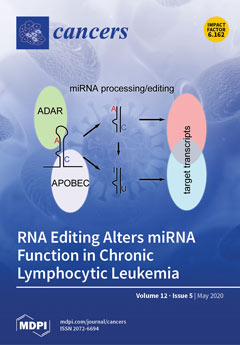There is an unmet need for positron emission tomography (PET) radiotracers that can image bone disease in multiple myeloma (MM) in a more sensitive and specific way than the widely used
18F-fluorodeoxyglucose (
18F-FDG). Sodium fluoride (
18F-NaF) is a highly sensitive tracer of bone reconstruction, evolving as an important imaging agent for the assessment of malignant bone diseases. We attempted to investigate for the first time the prognostic significance of
18F-NaF PET/CT in newly diagnosed, symptomatic MM patients planned for autologous stem cell transplantation (ASCT). Forty-seven patients underwent dynamic and static PET/CT with
18F-NaF before treatment. After correlation with the respective findings on CT and
18F-FDG PET/CT that served as reference, the
18F-NaF PET findings were compared with established factors of high-risk disease, like cytogenetic abnormalities as well as bone marrow plasma cell infiltration rate. Furthermore, the impact of
18F-NaF PET/CT on progression-free survival (PFS) was analyzed. Correlation analysis revealed a moderate, significant correlation of the
18F-NaF parameters SUV
average and K
1 in reference tissue with bone marrow plasma cell infiltration rate. However, no significant correlation was observed regarding all other
18F-NaF PET parameters. Survival analysis revealed that patients with a pathologic
18F-NaF PET/CT have a shorter PFS (median = 36.2 months) than those with a physiologic scan (median = 55.6 months) (
p = 0.02). Nevertheless, no quantitative
18F-NaF parameter could be shown to adversely affect PFS. In contrast, the respective analysis for quantitative dynamic
18F-FDG PET/CT revealed that the parameters SUV
max, fractional blood volume (V
B), k
3 and influx from reference tissue as well as SUV
average from MM lesions had a significant negative impact on patient survival. The herein presented findings highlight the rather limited role of
18F-NaF PET/CT as a single PET approach in MM.
Full article






